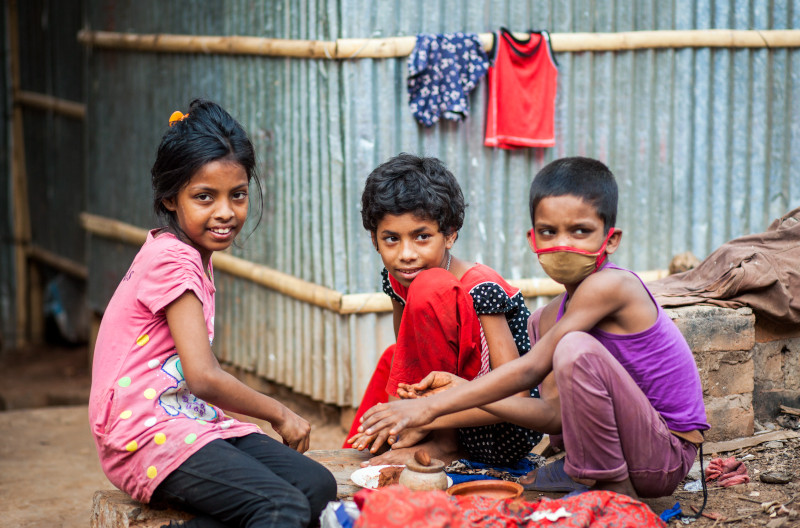Where do Bangladesh’s “new” poor fit?
April 10, 2023

The world is becoming increasingly coexistent with crises. A pandemic, the Ukraine-Russia war, and cost-of-living crisis are only a few of the ordeals we’ve seen in just the last two years. As is characteristic of such crisis settings, those already marginalized are further pushed back, augmenting existing barriers to accessing services, resources and opportunities. The UN’s Sustainable Development Goals centered around leaving no-one behind become all the more difficult to achieve.
Crisis settings are now leading to a worrying trend where those not categorically marginalized are becoming increasingly vulnerable. The World Bank estimates that the COVID-19 pandemic pushed 71-100 million people into extreme poverty, giving rise to the “new poor”, those above the poverty line pre-pandemic who fell below the marker during it. Against this backdrop, identifying vulnerabilities for development assistance becomes an exponentially more difficult – yet necessary process.
In Bangladesh, around 20 percent of the population was below the poverty line before 2020. This figure has increased substantially since, and is becoming a phenomenon less temporary than expected. In accurately identifying the vulnerabilities of such groups, conventional, income-centred measures of poverty may fall short.
Policy measures must therefore be dispensed using tools that can effectively deal with a range of vulnerabilities, beyond income.
One is the Multidimensional Poverty Index (MPI), which captures deprivations in non-monetary dimensions of wellbeing, utilizing a range of indicators in calculating poverty levels for a particular population. Poverty levels are then represented by an MPI score. The higher the figure, the greater the level of poverty.
To see whether multidimensional approaches to addressing vulnerability could potentially be more helpful during crises the Research Facility at the UNDP Bangladesh country office analyzed data from its "Livelihoods Improvement of Urban Poor Communities" (LIUPC) project. This is a poverty reduction programme covering four million urban poor in 19 Bangladeshi cities, and employs the MPI metric to identify deprivation levels of potential beneficiaries. Conditional cash grants are provided to help eligible MPI-poor households start a business or expand an existing one. These households also received COVID-19 relief in the form of cash, food, or preventive materials as unconditional support, separate from grants intrinsically part of the project. A study presented in a recent UNDP Development Futures Series brief compared the before-and-during COVID MPI figures of the beneficiary group with two other household categories – MPI-poor non-grantee households, and vulnerable MPI non-poor households. The detailed methodology and results of the study can be seen here.
Some of the findings from the study were intuitive, business grants disbursed by the project generally helped poor households reduce their multidimensional poverty levels, despite the pandemic.
Far more interesting however were the rather less intuitive policy insights from the analysis:
Consider vulnerable non-poor groups in development programming.The study’s findings corroborated the emergence of the “new poor”. Households with MPI scores not high enough to be eligible for grants (but still vulnerable, just below the MPI poverty threshold) experienced on average an increase in their multidimensional poverty levels during the pandemic. People in these categories usually remain outside the purview of emergency policy measures, having not met eligibility requirements of being “poor” under normal circumstances. As such, their vulnerabilities remain unaddressed and are exacerbated during crises.
Cash support helps vulnerable groups during crises. Findings suggest that the improvement in MPI levels was concentrated amongst the poor groups, including non-grant receivers, while the vulnerable group, who did not receive grants, saw poverty levels deteriorating. The latter group barely received cash support even in the form of COVID-19 relief, unlike the poor groups. This suggests that in crisis situations, households that receive unconditional cash support may be able to use it to improve living conditions in the immediate term, including households that are not the neediest judging solely by MPI score, but are still vulnerable and at-risk during crises.
Context-specific MPI can complement income-based poverty measures. Increases or decreases in a household’s MPI score may obscure changes in households with specific vulnerabilities, such as members with disabilities, members belonging to a particular age group, or geographical and regional characteristics. Despite an overall decline in MPI scores amongst poor households who received grants, the improvement in multidimensional poverty was not reflected for grantee households with disabled members. Thus, the use of a uniform MPI metric in programming, irrespective of variations in local contexts, also risks overlooking specific needs of vulnerable communities.
Understanding multidimensional poverty would greatly benefit from dynamic data. The study used static data which cannot account for real-time changes occurring after collection. In this case, if the data had been dynamic and could be updated during the pandemic, the project may have been able to identify beneficiaries and discern the nature of relief needed more appropriately.

 Locations
Locations